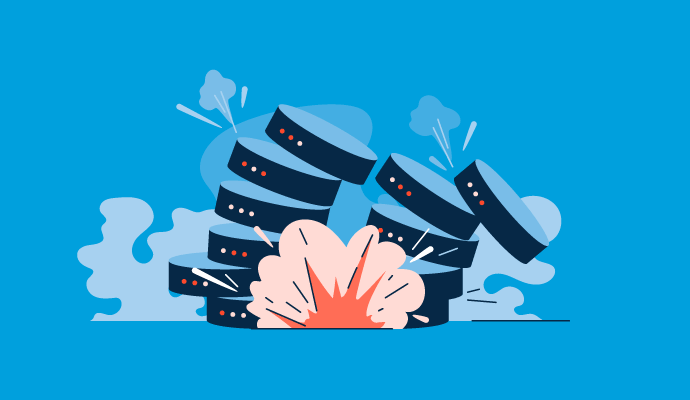The Importance of Effective Data Destruction Practices in Shielding Sensitive Info and Ensuring Computer System Protection
In a period where data violations are progressively typical, the value of effective data destruction methods can not be overemphasized. Organizations face considerable dangers when delicate information is improperly gotten rid of, possibly resulting in unauthorized gain access to and serious economic consequences. Implementing durable information damage techniques not only reduces these dangers yet additionally straightens with lawful compliance requirements, guaranteeing that organizations maintain their credibility and foster customer trust fund. The concern remains: what certain techniques can be utilized to enhance these methods, and exactly how can companies effectively incorporate them right into their overall cybersecurity framework?
Understanding Information Devastation
Comprehending information devastation is vital in today's digital landscape, where delicate information can conveniently be jeopardized. Effective data destruction includes not just making certain but removing documents that data is irretrievable via extensive techniques. This procedure is crucial for companies that take care of personal customer info, intellectual residential or commercial property, or inner files, as any kind of violation can result in severe monetary and reputational effects.
Information damage includes numerous strategies, consisting of shredding physical media, degaussing magnetic storage devices, and employing software-based services that overwrite information multiple times. Each method serves a details purpose and has to align with the sensitivity of the details being thrown away. For instance, physical devastation is usually liked for hard disk drives containing very personal data, while software program methods could suffice for less sensitive details.
Furthermore, adhering to sector criteria and laws, such as the General Information Protection Law (GDPR) or the Health Insurance Mobility and Responsibility Act (HIPAA), is critical for conformity and to mitigate legal dangers. Organizations needs to establish a robust data destruction plan, train employees on finest practices, and frequently investigate their procedures to make sure that all delicate details is gotten rid of safely and successfully.
Threats of Inadequate Practices
Inadequate data destruction practices subject organizations to considerable threats that can have far-ranging repercussions. When delicate info is not correctly thrown away, it remains prone to unapproved gain access to, which can bring about data violations and identification burglary. Such incidents not only compromise the security of individuals however likewise stain the organization's credibility, leading to a loss of consumer depend on and prospective economic effects.
Furthermore, regulative compliance is significantly stringent in several sectors. Failing to abide by information devastation guidelines can lead to hefty penalties and legal actions versus companies. These penalties can strain monetary resources and divert focus from core service procedures.
Furthermore, the misuse of recurring data can cause copyright theft or business reconnaissance, threatening affordable benefits (data destruction). The influence of poor data damage prolongs past prompt economic losses; it can likewise cause lasting damages to brand name integrity and market position

Organizations should recognize that information protection is not exclusively concerning avoiding violations; it likewise includes the responsible administration of information throughout its lifecycle. Ignoring reliable data devastation protocols can have devastating effects, underscoring the necessity for durable actions to alleviate these risks.
Finest Practices for Information Damage
Carrying out reliable data destruction practices is vital for safeguarding sensitive info and keeping conformity with regulative standards. Organizations must adopt a multi-faceted technique to make sure that information is irretrievable, thus preventing unapproved access and possible violations.
First, data should be categorized based on sensitivity, permitting companies to apply proper devastation approaches customized to the level of danger. For electronic data, using software-based data-wiping devices that abide with sector requirements can effectively overwrite existing data. Physical devastation methods, such as shredding or degaussing, are important for devices that save sensitive details, making sure complete removal.
Establishing a clear information retention plan is important, detailing the length of time various types of details must be retained before damage. Routine audits of data storage systems are also essential to recognize out-of-date or unneeded data requiring elimination.
Furthermore, training workers on the relevance of data devastation and the details procedures to adhere to fosters a culture of protection within the company. Finally, preserving paperwork of information devastation processes provides accountability and sustains conformity with exterior laws and interior plans. By adhering to these best techniques, organizations can significantly reduce the threats connected with data direct exposure.
Legal and Conformity Factors To Consider

Failing to abide by these laws can lead to serious penalties, including significant penalties and reputational damage. Organizations should execute a durable information damage policy that lines up with these legal frameworks and gives clear guidelines on the appropriate techniques of data disposal, whether physical shredding or electronic cleaning.
In addition, preserving paperwork of information devastation tasks is vital for demonstrating compliance during audits or examinations. By prioritizing lawful and conformity factors to consider, companies can enhance their data protection stance and foster count on with stakeholders and customers, eventually adding to an extra safe and secure information management atmosphere.
Benefits of Effective Data Destruction
Reliable data damage practices expand beyond plain compliance; they use significant benefits to organizations that prioritize them. By making certain that delicate details is irretrievably ruined, organizations reduce the threat of information breaches and the possible monetary effects associated with them. This proactive strategy not only safeguards against unapproved access but also improves the overall trustworthiness of the organization in the eyes of clients and stakeholders.
Implementing robust information devastation approaches, such as physical destruction of storage devices or advanced information Continue cleaning methods, adds to the conditioning of an organization's cybersecurity posture. data destruction. It minimizes the likelihood of intellectual building theft and protects exclusive details, consequently maintaining an one-upmanship in the marketplace
Final Thought
To conclude, effective information devastation methods are crucial for safeguarding delicate info and improving general computer safety and security. By executing comprehensive approaches such as software, degaussing, and shredding overwriting, organizations can minimize the threats related to unapproved access and data breaches. Adherence to regulative standards, consisting of GDPR and HIPAA, more enhances conformity and shields against legal effects. Ultimately, a dedication to robust data devastation approaches promotes a society of duty, therefore enhancing a company's cybersecurity stance and preserving customer trust.

 Shaun Weiss Then & Now!
Shaun Weiss Then & Now! Daryl Hannah Then & Now!
Daryl Hannah Then & Now! Heather Locklear Then & Now!
Heather Locklear Then & Now! Jane Carrey Then & Now!
Jane Carrey Then & Now! Morgan Fairchild Then & Now!
Morgan Fairchild Then & Now!